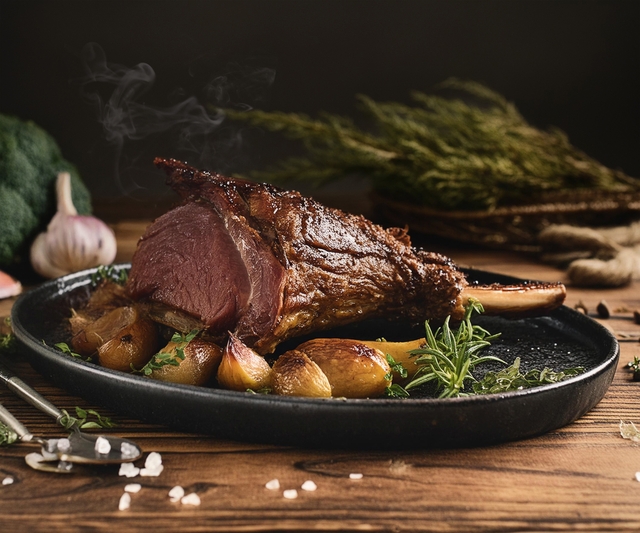Easter is a great time to share food because it is a holiday rooted in themes of renewal, togetherness, and celebration. Across cultures and traditions, food plays a central role in marking the occasion, whether through symbolic dishes, festive feasts, or communal gatherings. Here are some dishes to share with your loved ones this Easter.
1. Roast Lamb
Roast lamb has been a staple of Easter feasts for centuries, with its roots in Jewish Passover traditions. The lamb represents sacrifice, referencing the lambs sacrificed in the Old Testament and Jesus being called the “Lamb of God” in Christian theology. In many cultures, particularly in Mediterranean and European countries, roast lamb is the centerpiece of Easter Sunday meals.
The lamb is typically seasoned with garlic, rosemary, thyme, salt, and pepper. Some recipes call for marinating the meat overnight to enhance its flavor. The lamb is then roasted in the oven until tender, often accompanied by potatoes, carrots, and other root vegetables. Greek-style roast lamb, for instance, is commonly served with lemon-roasted potatoes and tzatziki sauce. In the U.K., a mint sauce or redcurrant jelly often complements the dish.
2. Hot Cross Buns
Hot cross buns are small, spiced sweet rolls filled with raisins or currants and marked with a cross on top, which symbolizes the crucifixion of Jesus. Traditionally eaten on Good Friday, these buns date back to medieval England, where they were considered a sacred food. Some legends even suggest that sharing a hot cross bun with someone ensures friendship throughout the year.
The dough is enriched with butter, eggs, and milk, making it soft and slightly dense. The spices, such as cinnamon, nutmeg, and allspice, add warmth and depth of flavor. The cross on top is usually made from flour and water paste or piped icing after baking. Many people enjoy these buns warm with butter or jam.
3. Easter Ham
Baked ham is one of the most popular Easter dishes, especially in the U.S. and parts of Europe. Unlike lamb, which has religious symbolism, ham became an Easter tradition mainly due to its practicality. In earlier times, pigs were slaughtered in the fall, and the meat was cured over the winter. By spring, the ham was ready to eat, making it a natural choice for Easter celebrations.
Easter ham is often glazed with honey, brown sugar, maple syrup, or pineapple juice for a sweet and savory balance. Cloves may be inserted into the skin for added flavor and decoration. It is commonly served with side dishes such as scalloped potatoes, green beans, or sweet potatoes.
4. Paska (Easter Bread)
Paska is a traditional Eastern European Easter bread, especially popular in Ukraine, Russia, and Poland. This rich, egg-heavy bread is slightly sweet and often decorated with intricate braids or religious symbols. The name “Paska” comes from the Greek word for Easter, Pascha.
The bread is made with flour, eggs, sugar, butter, and yeast, resulting in a soft yet sturdy loaf. Some variations include raisins, orange zest, or vanilla for extra sweetness. Paska is often blessed in church before being served at the Easter table. It pairs well with butter, honey, or cheese.
5. Deviled Eggs
Deviled eggs are a simple yet classic Easter appetizer, perfect for using up hard-boiled eggs from Easter egg hunts. The dish originated in ancient Rome but became popular in American cuisine in the 19th and 20th centuries. To make deviled eggs, hard-boiled eggs are cut in half, and the yolks are mixed with mayonnaise, mustard, vinegar, salt, and paprika. The mixture is then piped back into the egg whites. Some variations include relish, bacon, or avocado for added flavor.
These dishes reflect Easter’s blend of religious tradition and seasonal ingredients, making them cherished holiday staples worldwide.







